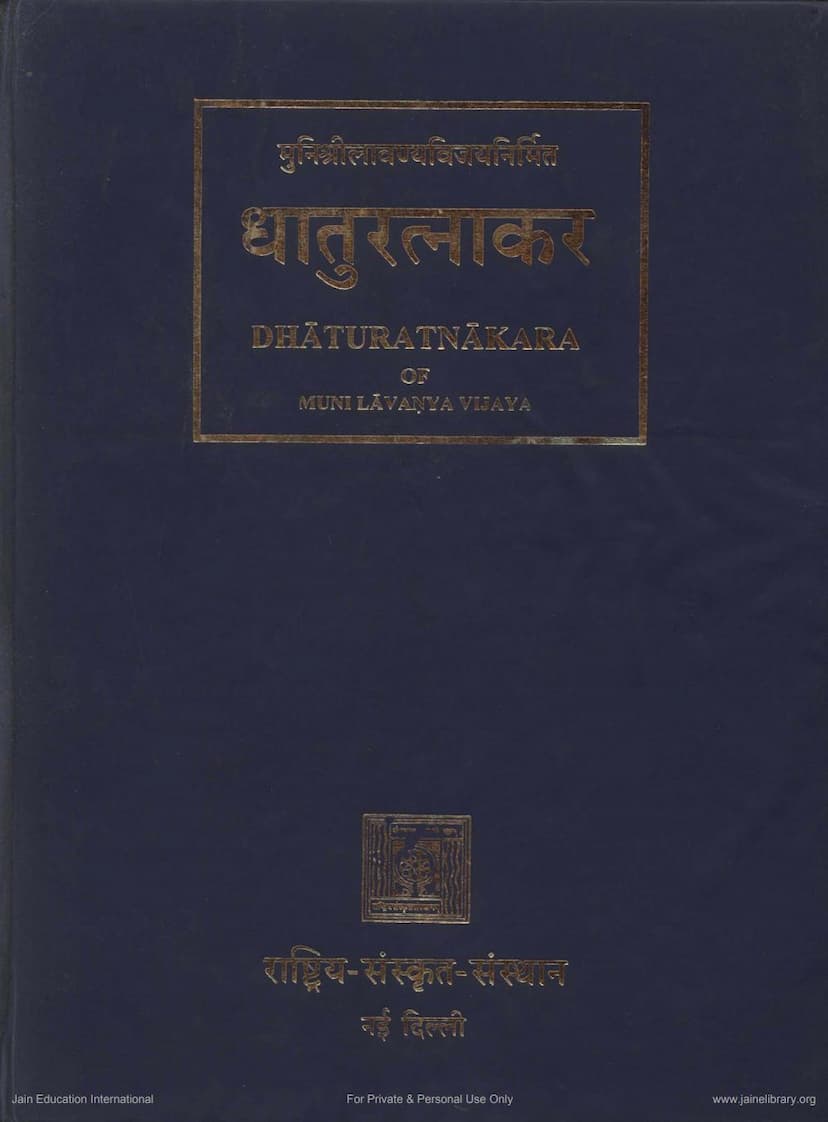Dhaturatnakar Part 5
Added to library: September 1, 2025

Summary
This is a summary of Dhaturatnakar Part 5, authored by Lavanyasuri, published by Rashtriya Sanskrit Sansthan, New Delhi. This volume is the fifth part of the larger work "Dhaturatnakar" and focuses on the "Bhavakarma Prakriya" (process of mental actions/affects).
The book is a comprehensive grammatical treatise, specifically on Sanskrit verb roots (dhatus) and their conjugations, following the tradition of Jain scholars. Muni Lavanya Vijaya Suri, a prominent Jain Acharya, compiled this work. The publication itself is a revised edition, with the second reprint being in 2006. The preface includes a message from Arjun Singh, the then Union Minister for Human Resource Development, highlighting the importance of making rare Sanskrit literature accessible.
The core content of this volume is the systematic presentation of the conjugation of Sanskrit verb roots, particularly their forms related to Bhavakarma (mental actions/states). The text meticulously lists numerous verb roots, primarily from the Bhavadi Gana (the first class of Sanskrit verbs), and details their paradigms across various tenses, moods, and voices, with a particular emphasis on the Bhavakarma Prayoga (passive or mental voice).
The book follows a standard grammatical format, defining the characteristics of a root (dhatu), distinguishing between transitive (sakarmaka) and intransitive (akarmaka) verbs, and explaining concepts like 'phala' (fruit/result) and 'vyapara' (action) in relation to verb meaning. It then proceeds to list and conjugate a vast number of roots, providing their specific meanings and their various forms in the passive/mental voice (Bhave).
Key aspects covered include:
- Definition of Dhatu: Explaining what constitutes a Sanskrit verb root.
- Classification of Verbs: Distinguishing between transitive and intransitive verbs.
- Bhavakarma Prakriya: This is the central theme, detailing how verb roots are conjugated to express mental actions, emotions, or states of being. The text presents an exhaustive list of roots, categorized, and shows their conjugation in various tenses (Lat, Lit, Lut, Lrt, etc.), moods (Imperative, Potential), and persons, focusing on the passive voice (Bhave prayoga).
- Detailed Conjugation: For each verb root, the text provides its meaning and then lists its various forms (e.g., present tense passive forms like 'bhūyate', 'bhūyetā', 'bhūyante'). This is done for a multitude of roots, both vowel-ending (svaranta) and consonant-ending (vyanjananta), covering a significant portion of the Sanskrit verb system.
- Examples: The text provides illustrative examples for grammatical principles and specific verb forms.
In essence, this volume serves as a crucial reference for understanding the nuances of Sanskrit verb conjugation, specifically in relation to expressing mental states and passive actions, from a Jain grammatical perspective. It is a testament to the detailed and rigorous approach of Indian traditional grammar.